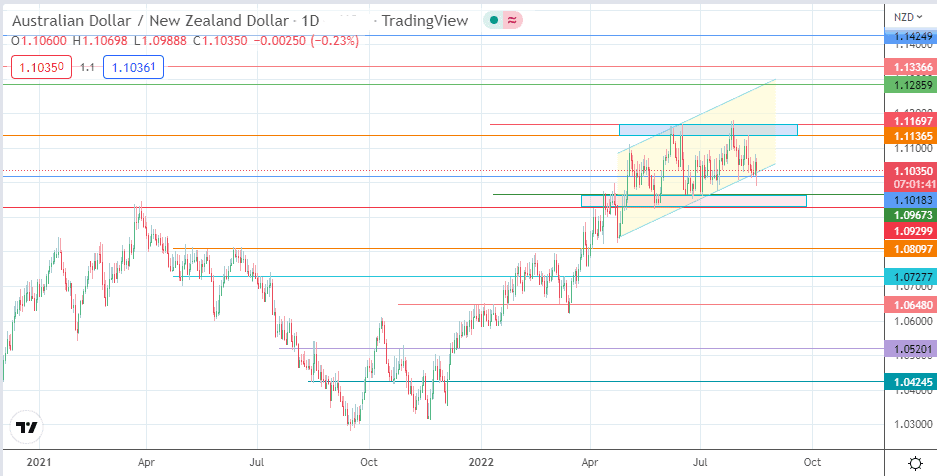The AUD/NZD pair is off session lows but continues to trade in negative territory after Tuesday’s interest rate hike by the Reserve Bank of New Zealand (RBNZ). The RBNZ raised rates by 50 bps as expected. However, the bank revised its outlook on unemployment and inflation.
The RBNZ said it expected inflation to start cooling from present levels but would only decline below 3% in two years. Unemployment is also expected to rise to 5% in three years. The market expectation had been for the bank’s sub-3% inflation projections to be hit by September 2023. The reluctance of the RBNZ Governor to provide information on what the bank could do in its October 2022 meeting put the Kiwi Dollar on the back foot against other currency majors, but not the Australian Dollar.
Why is this so? The Australian Dollar has been on the back foot all week after weak Chinese retail sales, fixed asset investments, and industrial production data. Given that New Zealand lags behind Australia in international trade volumes, the Australian Dollar is more exposed to China than its island neighbor. This is why the AUD/NZD pair indicates strength in the Kiwi Dollar versus the Aussie Dollar.
The pair tends to be range-bound and only occasionally trends, with reduced price ranges, and more predictable trend moves. The pair trades within an ascending channel but also lies between a supply and demand zone, as shown on the daily chart. The AUD/NZD’s outlook is presented below.
AUD/NZD Forecast
A bullish outlook depends on a bounce off the 1.10183 support and the lower boundary of the channel pattern, targeting the supply zone’s lower border at 1.11365 (4 September 2017 prior high). This supply zone, whose upper border lies at 1.11697 (15 June high), must give way before the bulls can challenge the channel’s upper border at 1.12859 (23 March 2016 high).
Only when the bulls achieve clearance of this barrier can the prior high of 1 October 2013 at 1.14249 and the 1.15000 psychological barrier (2 August 2013) become viable northbound targets. On the flip side, the breakdown of the 1.10183 support opens the door toward the demand zone’s upper border at 1.09673, formed by the 20 June and 1 July lows.
A breakdown of this demand zone is required before 1.08097 becomes a new downside target. Below this support which houses prior highs 27 April – 24 May 2022, the 1.07277 pivot and the 8 March low at 1.06480 form additional barriers to the south.
AUD/NZD: Daily Chart


